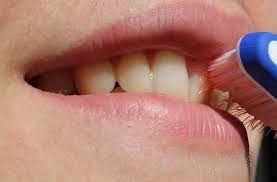1. Food
Berries, tomatoes, and other highly pigmented products are foods that stain teeth. In a way, your mother was right when she told you that sweets, popsicles, and sugar gum stain teeth or make them yellow. A diet high in sugar and simple carbohydrates can lead to bacteria and discolor teeth.
2. Drinks
Does the tea stain your teeth? Yes, colored drinks, such as red wine, coffee, and black tea, can stain if placed on teeth throughout the day. Cola drinks and sports drinks are usually high in sugar and cause the same effect.
3. cigarette
Although for many it is not a surprise, you can also have stained and brown teeth from smoking. Over time, tobacco products, from cigarettes and pipe smoke to chewy tobacco, can stain and darken teeth.
4. Medications
Some antibiotics can stain gray to brown teeth. Medications like doxycycline and tetracycline can darken the teeth of children younger than 8 years of age. Some antihistamines, high blood pressure medications, and antipsychotic medications can also stain adult teeth. Talk to your doctor about the possible side effects of the medications you are taking or could start taking.
5. Diseases
A less common cause of tooth discoloration may be a disease involving the enamel, or the treatment of a disease such as chemotherapy or radiation used to treat cancer. In this case, the discoloration is more of a brownish color. Keep in mind that, in addition to stained teeth, diseases can also be responsible for other oral problems.
6. Mild trauma to the teeth
Teeth can change color if they are severely impacted after a fall or accident. In adults, the atraumatic tooth may become gray or black; and in children, the atraumatic tooth may turn yellow or brown. If you believe that you have a tooth that has suffered a trauma,
7. Genetics
You may also have inherited teeth that are more easily stained or have an inherently yellow enamel. If you think you have genetically yellow teeth, you can help treat the problem by using whitening strips, toothpaste, or the LISTERINE® HEALTHY WHITE ™ RESTORING whitening mouthwash to regain that brilliant smile.
8. Age
If left untreated, stained teeth may become more apparent over the years. Teeth can also start to turn yellow as a natural part of the aging process. As a person ages, the enamel on the teeth shrinks, allowing the yellow dentin to show through.
9. Fluorine in excess
Fluorosis, which is overexposure to fluorine when you are young, can make your teeth appear discolored. This is often due to excessive consumption of fluoridated drinking water, juices, supplements, and other products during childhood.
10. Poor oral hygiene
Stained teeth can also be a sign of plaque buildup or dental degeneration. When you don't brush your teeth, floss, or rinse your mouth routinely to remove plaque buildup and prevent tartar buildup, tooth discoloration may accelerate.
How to prevent and treat stains on teeth. It is important to know the causes of staining on teeth for both treatment and prevention. If you think that some foods stain your teeth, avoid or limit their consumption. Drink using a straw to reduce contact with teeth. Don't use tobacco, and talk to your healthcare professional about recent medications, diseases, or dental injuries. To further reduce staining on your teeth, see a dentist for cleaning during your biannual visit. And in the meantime, brush, floss, and rinse with a bleach mouthwash,
.


No comments:
Post a Comment